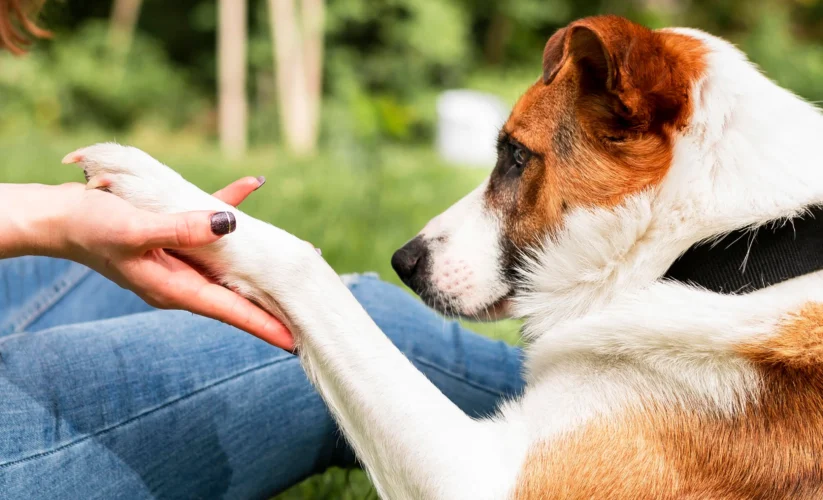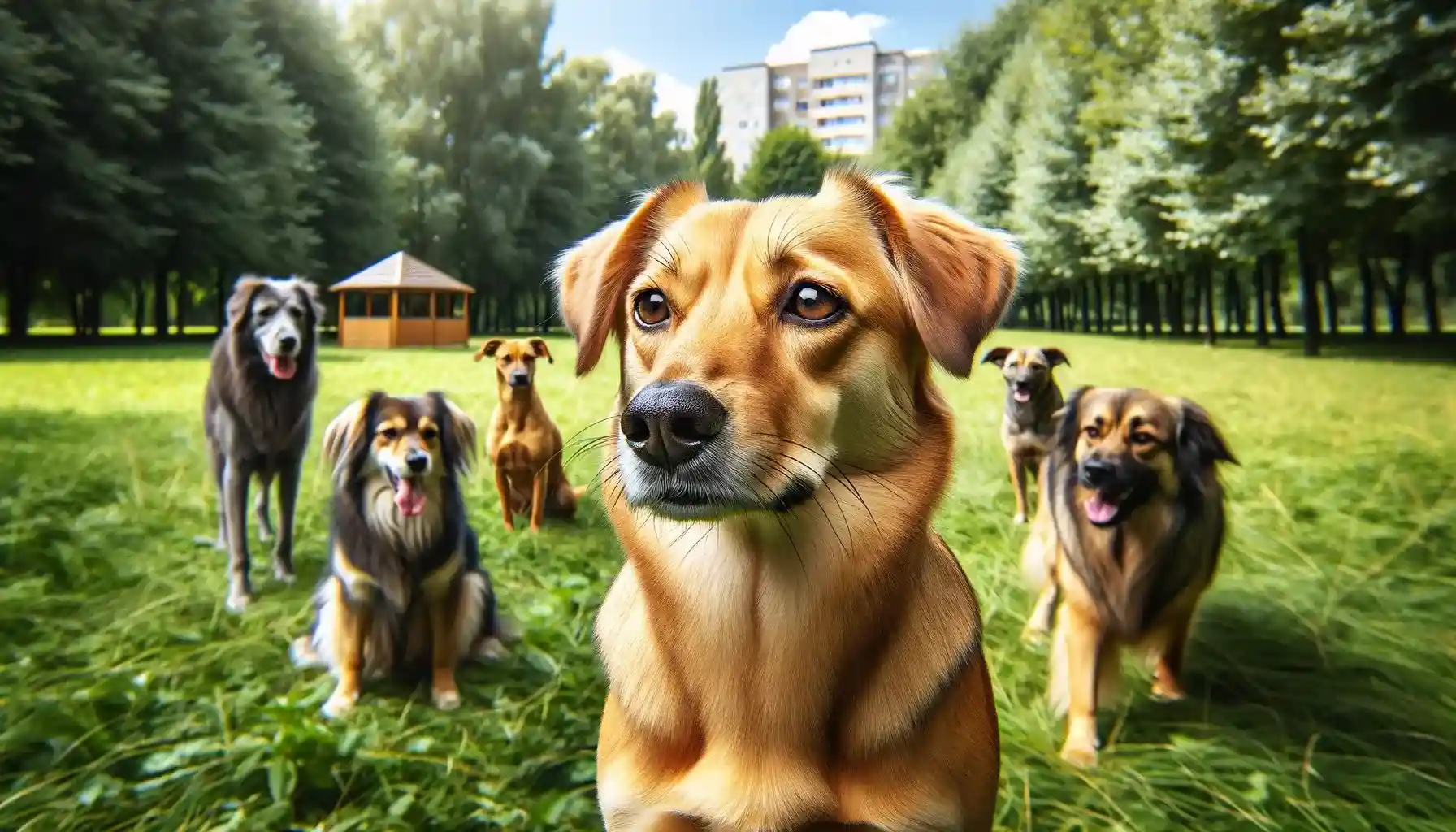
Breaking the Stigma: How to Rehome a Dog with Behavior Problems Successfully
Rehoming a dog with behavior problems can be a difficult and emotional decision for many pet owners. The thought of giving up a beloved furry companion can feel overwhelming and even guilt-inducing. However, it’s important to remember that in certain situations, rehoming a dog with behavior problems may be the best solution for both the owner and the dog. In this blog post, we will discuss the stigma surrounding rehoming a dog with behavior problems and provide tips for successfully finding a new home for your furry friend.
Understanding Your Dog’s Behavior Problems
To successfully rehome your dog, grasping the root of their behavioral issues is the first step. This understanding requires patience, observation, and sometimes even professional assistance. You must try to decode whether your furry friend’s behavior is fear-based, originating from a traumatic experience, or simply the result of inadequate training and socialization.
Remember, every behavior has a cause. Does your dog become aggressive around strangers? Perhaps they were never socialized properly. Do they exhibit separation anxiety when left alone? Maybe they’re scarred from previous experiences of abandonment. These behaviors, although challenging, are their way of communicating their discomfort.
Knowing why your dog acts the way they do will help you communicate effectively with potential adopters, ensuring they’re fully aware of what they’re signing up for. Plus, with this understanding, you can work on creating a tailored plan to manage and possibly even resolve these behavioral issues. Ultimately, this knowledge acts as the foundation for successful rehoming.
Don’t be disheartened if you can’t figure it out on your own. Sometimes, it takes the trained eye of a professional to unravel the intricacies of dog behavior. In such cases, don’t hesitate to reach out for help. By doing so, you’re taking the first essential step towards giving your dog a chance at a happy, stable life in a new home.
Consulting with a Professional Behaviorist
Finding the key to unlock the mystery of your dog’s behavior may require enlisting the help of an expert – a professional dog behaviorist. This individual, trained in the science of canine behavior, can offer you a fresh perspective on the root of your dog’s issues. They can shed light on why your dog behaves a certain way, helping you connect the dots that may seem elusive at first glance.
A professional behaviorist will work with you and your dog to create a tailored behavior modification plan. This plan isn’t just a random set of instructions; it’s a roadmap designed specifically for your dog, taking into account their unique temperament, past experiences, and triggers. Whether it involves using positive reinforcement techniques or counter-conditioning exercises, this plan will aim to manage, and ideally rectify, your dog’s behavior issues.
Involving a behaviorist also opens doors to potential homes that may otherwise remain shut. Prospective owners, understandably, may have reservations about adopting a dog with behavioral challenges. However, seeing that a professional is involved and that there is a structured plan in place, can provide them with the confidence they need to open their homes and hearts to your dog.
Finally, remember that consulting with a behaviorist isn’t a one-time affair. They are there to support you and your dog through the rehoming journey, offering guidance and solutions to overcome hurdles along the way. As challenges surface or new behaviors emerge, the behaviorist can tweak the plan, ensuring that it remains effective and applicable.
Yes, there may be costs involved in consulting with a professional behaviorist, but consider it an investment. An investment in understanding your dog better, in creating a solid foundation for their behavior management, and in increasing their chances of finding a loving and understanding forever home. With this in mind, don’t hesitate to reach out to these professionals. Their expertise might just be the lifeline your dog needs to transition successfully to a new home.
Preparing Your Dog for Rehoming
The journey towards rehoming begins long before a potential new owner is in the picture. It starts with the careful preparation of your dog for the transition. Think of it as a makeover, not only for your dog’s behavior but also for their ability to adapt to new surroundings and situations. This journey may be slow and meticulous, but it’s an essential stepping-stone on the path to rehoming.
Preparation commences with teaching basic commands such as sit, stay, and heel. This step not only instills good behavior but also builds trust between you and your dog. Remember, success lies in consistency and positive reinforcement. Shower them with praise or treats each time they follow a command. This way, they’ll associate obedience with rewards, which encourages them to repeat the good behavior.
Next, focus on the desensitization process. Dogs with behavior problems often react adversely to certain stimuli like loud noises, other animals, or unfamiliar people. Gradually expose your dog to these triggers in a controlled, calm environment. Over time, this process can help reduce their anxiety and fear, allowing them to become more comfortable around these stimuli.
Let’s not forget the importance of socialization. Dogs are inherently social animals and should be comfortable interacting with other dogs and people. Arrange playdates with other dogs or bring your dog along for outings to dog-friendly parks. Exposing them to different dogs, people, and environments can help improve their social skills.
Lastly, help your dog adapt to new routines. Changes in environment or routine can be unsettling for dogs, particularly those with behavior problems. Introduce new routines gradually and make sure to reward them for successfully adapting to these changes.
Remember, this preparatory phase requires patience and persistence. Some days might feel like two steps forward and one step back. But, it’s essential to stay the course, knowing that you’re working towards giving your dog the best shot at a new life in a loving, understanding home.
Finding a Suitable Home
Unearthing the perfect home for a pooch grappling with behavior issues may seem like searching for a needle in a haystack. Yet, with transparency and tenacity, it’s far from unachievable. Start by practicing honesty and clarity about your dog’s behavior problems when interacting with potential adopters. Let them know what they can expect, the progress your furry friend has made, and the behavior modification plan in place.
A suitable home for a dog with behavior issues isn’t just any home—it’s a sanctuary where the dog’s peculiar needs are understood, and their unique quirks embraced. Seek out individuals who have had experience with dogs harboring similar behavior issues. This past experience will better equip them to deal with any challenges that may arise. Alternatively, consider individuals or families that live in a calm, stable environment, conducive for a dog learning to overcome their behavior problems.
Don’t rush the process, it’s crucial to ensure the match feels right. Observe how potential adopters interact with your dog and pay attention to how your dog responds to them. After all, it’s not about just finding a new home, it’s about finding a safe, loving environment where your dog can continue to grow and improve.
Enlist the help of local shelters, rescue groups, or professional behaviorists who may know of potential adopters equipped to handle a dog with behavior problems. There are also specialized rescue organizations that focus on specific behavior issues, and they can be a valuable resource in your rehoming journey.
The process of finding a suitable home for a dog with behavior issues might be lengthy, but remember that it’s a journey worth taking. It’s the stepping stone to a happier, healthier future for your dog, where they are loved, accepted, and understood for who they are.
The Transition Period
Transitioning to a new home is a significant change for any dog, but it can be particularly challenging for a dog grappling with behavior problems. Ease your dog into this shift by keeping their routine as consistent as possible during the move. Keeping familiar rituals in place can create a sense of continuity and comfort for your canine companion, providing a touch of the familiar amid new surroundings.
You may also consider giving the new owner some of your dog’s favorite items, like their beloved chew toy or their cozy bedding. This will bring an element of their old life into their new home, and help them establish a sense of security. These familiar smells can work wonders in making them feel more at home and less anxious.
Consider a gradual transition approach. Begin with brief visits to the new home, where your dog can sniff around and get accustomed to the new smells, sounds, and sights. This allows them to slowly adjust to their new environment without feeling overwhelmed.
Don’t forget to communicate with the new owner about your dog’s typical reactions to stress or new situations. Understanding how your dog copes will allow the new owner to respond appropriately, helping to avoid potential triggers and providing reassurance during this crucial period.
Remember, it’s all about patience and understanding. Each dog adjusts at their own pace, and your dog’s comfort and wellbeing should always be the top priority. By planning carefully, you can make the transition to a new home as smooth as possible for your furry friend. With time, they will adjust and start to feel at home in their new environment, paving the way for their new life.
Providing Ongoing Support
The journey of successfully rehoming a dog doesn’t end once your beloved canine companion has settled into their new environment. It’s essential to continue offering support to their new owners, fostering a smooth and successful transition that benefits all parties involved.
Think of it as an extended hand of guidance, ready to help navigate the intricacies of living with a dog with behavior problems. You could be called upon to answer an array of questions that range from your dog’s favorite treats to their response to specific situations. Sharing your invaluable insights and experiences could help their new owners better understand and respond to their unique needs.
Your dog’s new family may appreciate advice on how to continue the behavior modification plan or guidance on maintaining the consistency of routines. Remember, consistency is key when managing behavior problems, and helping them adhere to the established routines can go a long way in ensuring your dog’s continued improvement and happiness.
Providing access to the professional behaviorist who has been involved can also be extremely beneficial. This access offers the new owners expert assistance and reassures them that they have a professional resource available to turn to when in need.
Being there for your dog’s new family encourages them, reminds them they’re not alone in this journey, and emphasizes the importance of maintaining the behavior management plan. It’s not just about finding your dog a new home – it’s about making sure they flourish there. So, extend that helping hand, offer your support, and stay involved. After all, your dog’s successful rehoming and happiness are what it’s all about.





